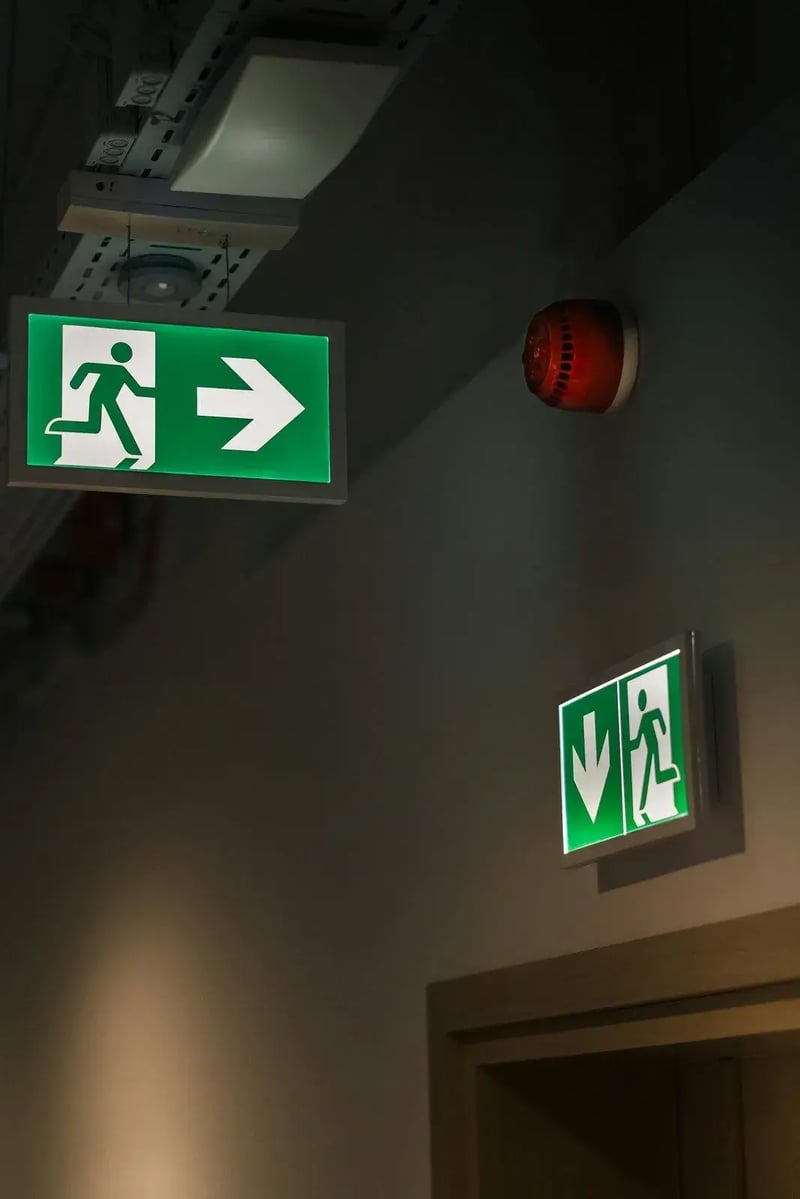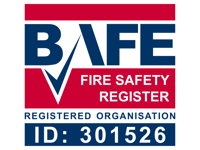Keeping Escape Routes Clear and Visible
Emergency lighting is a back–up for when the main power supply cuts out, resulting in darkness which could present a danger to the occupants of a building. Therefore emergency lights must operate automatically in all common areas and escape routes, and must be adequate for people to see clearly enough to navigate obstacles and find a way out safely.
As a vital component of a building’s life safety system, AEL fire & Security designs, installs and maintains emergency lighting systems for all types of businesses and premises.
Ranging from traditional bulkhead type lighting incorporated into the main lighting circuits, through to fully monitored LED systems with remote discharge function - AEL Fire & Security are able to provide an emergency lighting system to meet all types of sites and budgets.

Emergency Lighting Regulations
BS 5266-1:2011 Code of practice for the emergency escape lighting of premises.
.webp?width=1719&height=1250&name=AEL%20Images%20(2).webp)
There are various regulations that apply to emergency lighting, beginning with the Building Regulations 2000, in which Approved Document B outlines fire safety requirements for new buildings and the refurbishment of existing ones. This requires that, as well as escape routes, all open areas larger than 60m2 must have emergency lights in case the normal lighting fails. Further, parts of schools which do not have natural light, or which are used outside normal hours, must have emergency lighting.
In addition, The Fire Precautions (Workplace) Regulations 1997 state..."that the Emergency routes and exits requiring illumination must be provided with emergency lighting of adequate intensity in case the lighting fails.
Trusted By Leading Businesses
.webp?width=469&height=188&name=9%20(3).webp)
.webp?width=469&height=188&name=7%20(5).webp)
.webp?width=469&height=188&name=8%20(4).webp)
.webp?width=469&height=188&name=3%20(13).webp)
.webp?width=469&height=188&name=4%20(16).webp)
.webp?width=469&height=188&name=1%20(11).webp)
.webp?width=469&height=188&name=5%20(11).webp)
.webp?width=469&height=188&name=2%20(11).webp)
.webp?width=469&height=188&name=6%20(16).webp)
Why Choose AEL Fire
& Security?
We go beyond just delivering systems — we deliver service that truly supports your business. With a hands-on, personal approach, long-standing client relationships, and over 20 years of experience, we’re a partner you can rely on for the long term.
.webp?width=1156&height=750&name=AEL%20Systems%20Service%20Images%20(2).webp)
Person-to-Person Service
Long-Term Client Relationships
20+ Years of Experience
Accreditations
We’re committed to delivering the highest standards across every project. Our fire safety services are BAFE certified, and our security solutions are approved to NSI Gold standards — the industry benchmark for excellence. We also hold Constructionline, CHAS, SafeContractor, and ISO 9001 certifications, ensuring all work is carried out safely, professionally, and in full compliance with audited industry standards.

.webp?width=200&height=150&name=3%20(4).webp)
.webp?width=200&height=150&name=2%20(3).webp)
.webp?width=200&height=150&name=5%20(3).webp)
.webp?width=200&height=150&name=4%20(5).webp)
.webp?width=200&height=150&name=6%20(2).webp)
.webp?width=200&height=150&name=AEL%20Accreditations%20(1).webp)
Request Your Bespoke Quote
Every business is different — so your fire and security solution should be too. Fill out the short form to receive tailored pricing based on your specific requirements, site size, and system needs.
No obligation, no pushy sales – just clear, expert advice and a customised quote from our team.
Let us know what you need, and we’ll take care of the rest.

